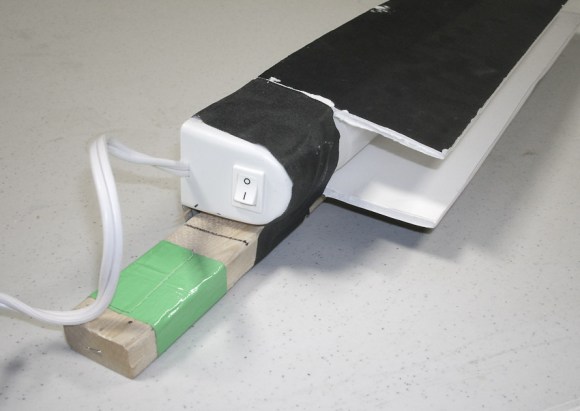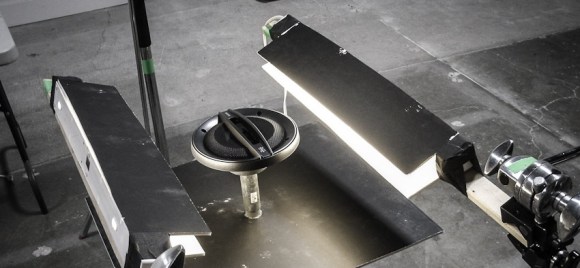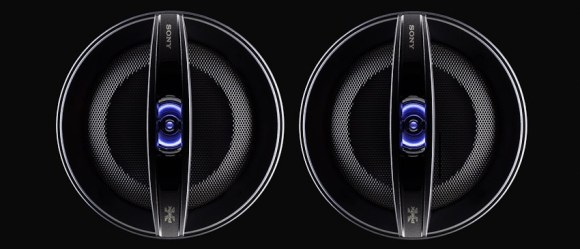
Professional photography lighting can be expensive. Sometimes the professional photographer may not want (or need) to spend the big bucks on lighting. [Alex] is one of those folks. He needed a specialized light source and instead of going out and buying some, he made exactly what he needed out of components unlikely to be found in a photography studio.
The project started off with some off the shelf $12 Home Depot under-cabinet lights. Foam core board was attached to the sides of each light to adjust the beam’s width. Opening and closing these foam flaps allow the light beam to be adjusted to ensure the perfect shot. The entire assembly was then taped to long, thin pieces of wood. The wood’s sole purpose is to facilitate mounting of the light.

This project is a low-buck as you can get and the results are exactly what [Alex] was looking for. The moral of the story is that a little ingenuity goes a long way and great results don’t have to be expensive.
















Slits of light are cool. The subject won’t mind the colour balance, may even look great. Florescent lights are poor colour light, and hard to correct in editing. Remove tape when done or face goo and painful removal later.
not hard at all to correct in editing if you shoot raw and have a solid white reference subject shot before you start shooting the photos. I do FL for photography lights all the time. you just need your starting reference shot. Or if you dont have a full copy of photoshop and Lightroom. set your camera to manual white balance, and set it off of the white card you shot (better is a 15% gray card) set the White balance in camera and shoot away with perfect white balance.
Exactly. Any time the light isn’t going to change, always shoot a custom WB. Takes 10 seconds and makes your entire session perfect.
Ummmm Someone might wanna tell that to the good folks at Kino Flo, or Peter Hurley. You see, he is a somewhat famous head shot photographer based out of NYC who uses a Kino Flo fluorescent setup to light his subjects. Yes, the Kino Flo use very high price ballasts and bulbs, but they are still fluorescent.
Also as stated by fartface (I really just wanted an excuse to type “fartface” (See what I did there?)) when shooting in a studio setting you would probably be using custom white balance anyway.
Here was my DIY solution for getting lights into my “studio”. It’s a super cheap clone of the Spiderlight TD5 fluorescent lighting setup. Three wooden panels with 5 sockets each: paint it white or cover with reflective Mylar, screw in 23W daylight bulbs (cheap at Home Depot!), and you have a decent continuous lighting setup.
http://s246.photobucket.com/user/Hornpipe2/library/studio_lights?sort=2
Never got around to building softboxes but that’s easy with some foamcore and diffusion material (parchment paper). I drew out cutting plans, just never made the trip to the craft store to buy the materials.
I got the idea from here:
http://alexcampagna.blogspot.com/2008/04/diy-spiderlight-strobe.html
but stripped it down even further by skipping the switches. Want less light? Reach in and unscrew a bulb!
Loads of this type of setups at http://www.diyphotography.net
YMMV trying to sync the shutter with a 50/60Hz fluorescent although getting the right exposure at low ISO may mean the exposure time is long enough for the flicker to be a non issue.
Do the higher cost bulbs/ballasts not operate at higher frequency?
These short T12 UV lights had to be long-exposed because they throw off (comparatively) little light, not because they flicker. I’m pretty sure that nowadays, even cheap fluorescent fixtures have electronic ballasts which pulse at ~20khz, far higher than the old magnetic ballast which did flicker at twice mains speed (and hummed loudly!).
Failing bulbs and ballasts can develop flicker problems, indicating that they need replacement. This section of the wikipedia article is pretty informative.
http://en.wikipedia.org/wiki/Fluorescent_lamp#Frequent_switching
LIke Greg said, electronic ballasts don’t have as pronounced flicker issues as the magnetic ballasts do. You’d be more likely to experience in video, and if you were in a studio setting you’d probably look at the resulting photos before you tore down your set to make sure you got the shot(s) that you needed.
I know a lot of photographers are using those Klauf light bars from Kickstarter. I got them last year, put them in my kitchen, and my wife LOVES them. Happy wife = happy life! Now, I’m shooting some ebay products with then and I have to say they really do make objects look soooo much better than any CFL or tungsten lighting I have ever had. Something to consider.